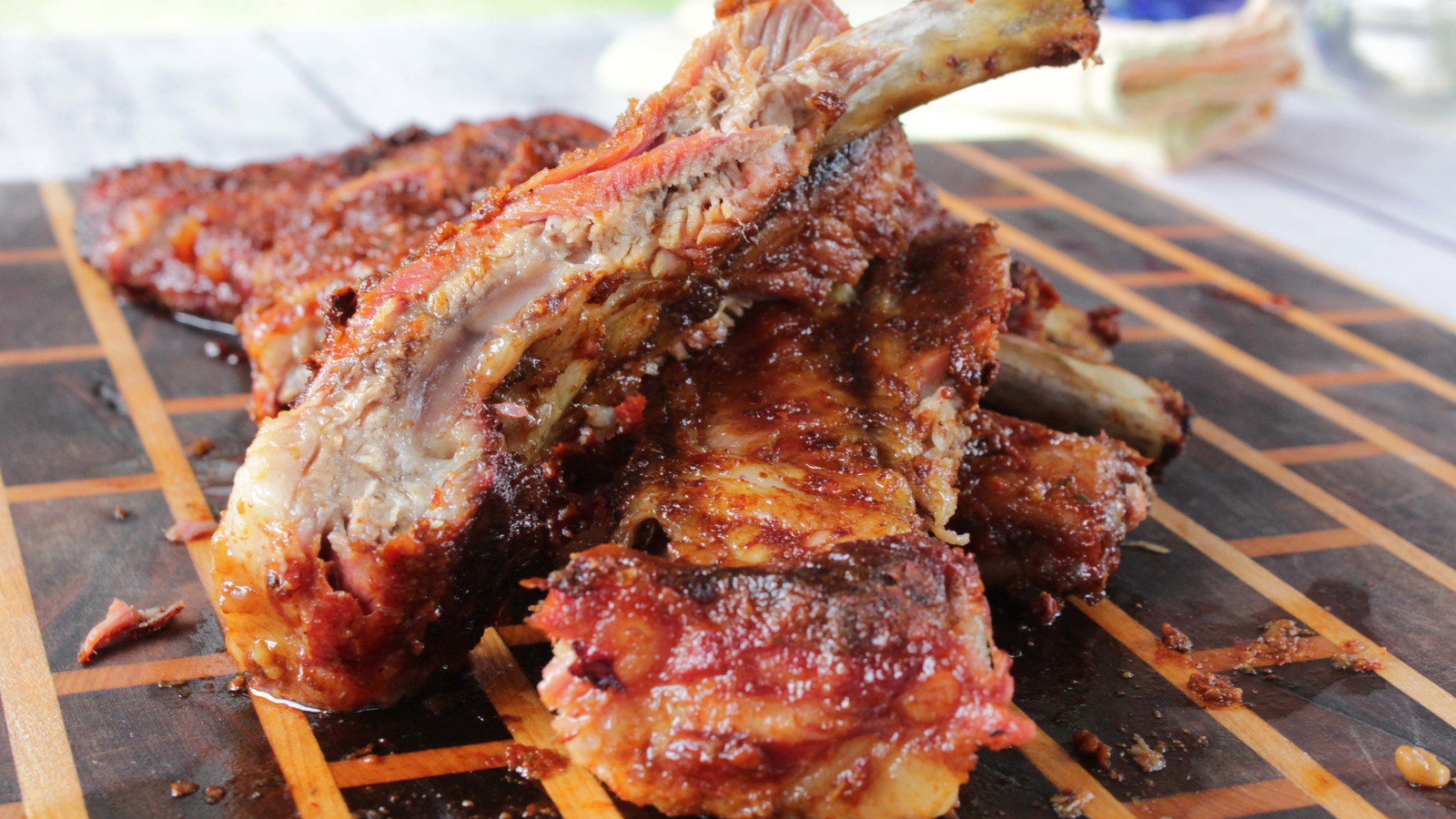Kurobuta Pork Spare Ribs with Salsa Roja
Category
Pork Ribs
Author
Katy Osuna
Servings
4 to 5
Prep Time
30 minutes
Cook Time
2 hours
This recipe was inspired by a conversation with my
partner, who is originally from Guadalajara, Mexico, and a comment he made
about how he loves dishes that explore the subtleties of Mexican flavor
combinations and ingredients.
The tangy sweetness of pineapple juice in the brine accents the flavor of the pork, while playing off of the fruity brightness of guajillo chiles, spices like oregano and cumin, and the mild nuttiness from smoking with pecan, hickory, and oak.

Ingredients
Brine
-
2 quarts of pineapple juice, plus a 1/2 cup
-
¼ cup of salt
-
2 tablespoons dried oregano
-
3 bay leaves
-
6 cloves of garlic, peeled and crushed
Dry Rub
-
2 tablespoons ground cumin
-
4 tablespoons of dried oregano
-
2 tablespoons of onion powder
-
2 tablespoons of salt
Sauce
-
9 guajillo chiles
-
4 tomatoes
-
4 ancho chiles
-
7 cloves of garlic
-
¼ cup apple cider vinegar
-
1 tablespoon sugar
-
3 to 4 tablespoons of salt
Directions
Brine
Put all the ingredients into a large non-reactive pot over medium heat. Reserve ½ a cup of pineapple juice for later use in cooking the ribs.
Heat just enough, stirring occasionally, to dissolve the salt. Let sit until it cools to room temperature, and then put it in the refrigerator for 30 minutes to an hour to cool further. You can keep it in the fridge for up to 3 days before brining your ribs.
Submerge your ribs and let them brine for 12 to 24 hours.
Dry Rub
Rub the oregano between your hands to break the leaves up into smaller pieces. You can also grind it in a grinder, but you don’t want the oregano to be turned into a fine powder.
Mix all the ingredients together and save until ready to use.
Sauce
Heat oven to 475°F. Arrange tomatoes on a baking sheet and cook for 20 to 30 minutes, setting the oven to broil for the last 5 to 10 minutes until they are charred and slightly bursting.
Remove the stems from the chiles and shake out the seeds and veins.
Over medium heat in a cast iron pan, toast the chiles briefly, just about 30 to 60 seconds, until fragrant. Set aside in a bowl.
Bring 3 cups of water to a boil and pour over the chiles, letting them soak for about 10 minutes until they are pliable.
Once the chiles and tomatoes are ready, add all the ingredients to a blender, with about ¼ cup of the water from the chiles. Blend until smooth. You still want it thick enough to rub onto the ribs, but if it’s too thick to blend smoothly, add a little more of the chile water.
Taste the sauce and add salt if needed. You don’t want it to be too salty since the ribs will be both brined and dry-rubbed. The sauce will taste harsh, with both the raw garlic and the chiles, but that will mellow out when cooking. No need to add more sugar. But if you do want the sauce to be spicier, you can add other kinds of spicier chiles such as chile de arbol, puya, or pequin.
Ribs
Remove the ribs from the brine after 12 to 24 hours and pat them dry.
Brush a thin layer of the sauce on the ribs and then sprinkle about 2 tablespoons of dry rub to each side of the ribs, gently pressing to make sure it adheres to them.
Wrap the ribs in parchment paper and let them rest for 2 to 4 hours.
Heat a smoker to 275°F using wood such as pecan, hickory, or oak that is on the milder side. For this recipe, a combination of the three was used.
Put the reserved pineapple juice in a spray bottle for spritzing the ribs during cooking.
Put the ribs on the smoker for 1 hour and 15 minutes, spritzing them with the pineapple juice every 15 to 20 minutes.
Take the ribs off the smoker and cover them liberally with sauce, wrapping them loosely in aluminum foil. Put them back on the smoker for 1 hour and 30 minutes to 2 hours.
You can check the doneness of your ribs in a few ways. A temperature test, which you want to read between 195°F and 200°F. You can also check by twisting an exposed bone, and if it starts to pull away from the meat with minimal effort, they’re ready.
